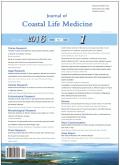Chemical composition, antibacterial and antifungal activities of Saudi Arabian Mentha longifolia L. essential oil
引用次数: 9
Abstract
Objective: To investigate the chemical composition, in vitro antibacterial and antifungal activity of Mentha longifolia L. essential oils using aqueous extract. Methods: Mentha longifolia L. essential oils were extracted using hydrodistillation with Clevenger apparatus for 3 h and the yield of the essential oil was calculated. Essential oils were qualitatively and quantitatively analyzed with gas chromatography and gas chromatographymass spectrometer. For these essential oils, antibacterial and antifungal activity against human pathogens were evaluated. Results: Nineteen chemical constituents representing 99.72% of the essential oil were found, comprising menthone (39.55%), isopulegone (30.49%), eucalyptol (10.38%), and α-terpineol (3.15%); these were major components, and others were minor components. The essential oil showed strong antibacterial activity against Staphylococcus aureus [(35.24 � 0.13) mm], Enterococcus faecalis [(32.12 � 0.12) mm] and Bacillus cereus [(30.06 � 0.04) mm], as well as antifungal activity against Aspergillus flavus [(38.02 � 0.06) mm], Alternaria alternaria [(35.26 � 0.12) mm], and Penicillum spp [(34.14 � 0.02) mm]. Conclusions: It seems that the essential oils derived from the Mentha longifolia L. species could be used as a natural source of antimicrobial agents.沙特阿拉伯长叶薄荷精油的化学成分及抑菌抑菌活性
目的:研究长叶薄荷挥发油的化学成分、体外抗菌及抗真菌活性。方法:采用Clevenger装置,采用加氢蒸馏法提取长叶薄荷精油,提取时间3h,并计算精油的收率。采用气相色谱和气相色谱质谱仪对精油进行了定性和定量分析。对这些精油的抗菌和抗真菌活性进行了评估。结果:挥发油中含有19种化学成分,占总精油的99.72%,分别为薄荷脑(39.55%)、异ulegone(30.49%)、桉树醇(10.38%)和α-萜品醇(3.15%);这些是主要的组成部分,其他的是次要的组成部分。该精油对金黄色葡萄球菌具有很强的抗菌活性[(35.24� 0.13)mm],粪肠球菌[(32.12� 0.12)mm]和蜡样芽孢杆菌[(30.06� 0.04)mm],以及对黄曲霉的抗真菌活性[(38.02� 0.06)mm],交链格孢[(35.26� 0.12)mm]和青霉属[(34.14� 0.02)毫米]。结论:从长叶薄荷中提取的精油可以作为一种天然的抗菌剂来源。
本文章由计算机程序翻译,如有差异,请以英文原文为准。
求助全文
约1分钟内获得全文
求助全文

 求助内容:
求助内容: 应助结果提醒方式:
应助结果提醒方式:


